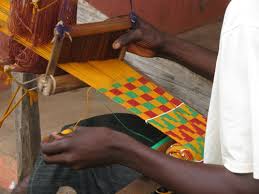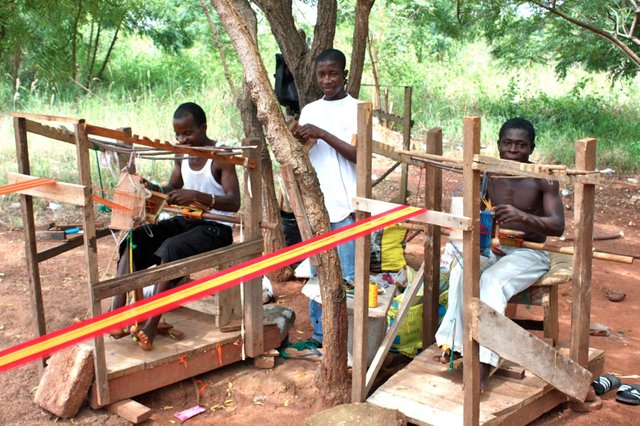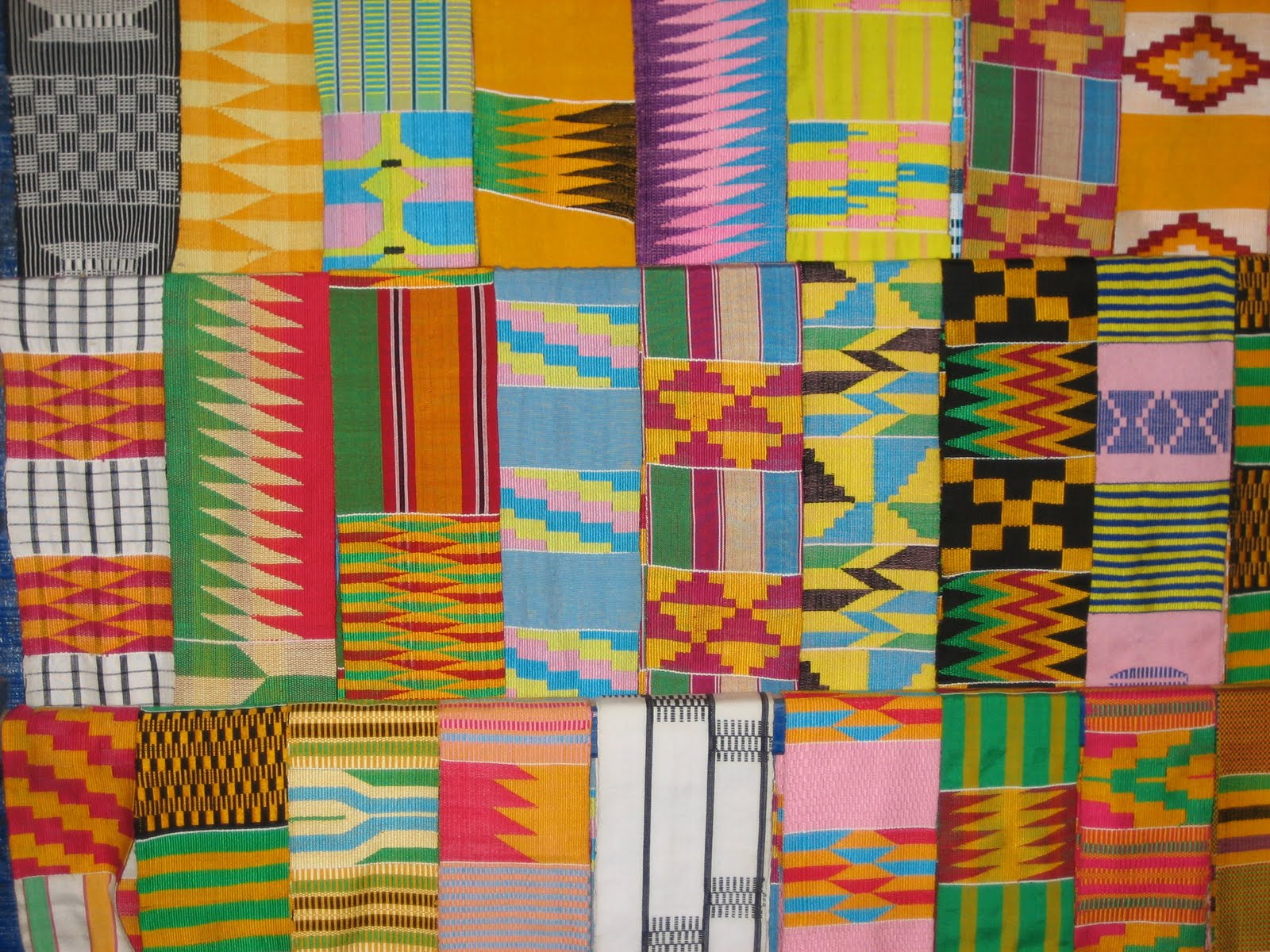"Kente" Cloth Weaving
The kente cloth is basically woven on a narrow horizontal wood structure called a loom.
 A heddle is an integral part of a loom. Each thread in the warp passes through a heddle, which is used to separate the warp threads for the passage of the weft. The typical heddle is made of cord or wire, and is suspended on a shaft of a loom. Each heddle has an eye in the center where the warp is threaded through. As there is one heddle for each thread of the warp, there can be near a thousand heddles used for fine or wide warps. A handwoven tea-towel will generally have between 300 and 400 warp threads, and thus use that many heddles.
A heddle is an integral part of a loom. Each thread in the warp passes through a heddle, which is used to separate the warp threads for the passage of the weft. The typical heddle is made of cord or wire, and is suspended on a shaft of a loom. Each heddle has an eye in the center where the warp is threaded through. As there is one heddle for each thread of the warp, there can be near a thousand heddles used for fine or wide warps. A handwoven tea-towel will generally have between 300 and 400 warp threads, and thus use that many heddles.
In weaving, the warp threads are moved up or down by the shaft. This is achieved because each thread of the warp goes through a heddle on a shaft. When the shaft is raised the heddles are too, and thus the warp threads threaded through the heddles are raised. Heddles can be either equally or unequally distributed on the shafts, depending on the pattern to be woven. In a plain weave or twill, for example, the heddles are equally distributed.

The "kente" cloth is also worn by many other groups who have been influenced by Akans. It is the best known of all African textiles. Kente comes from the word kenten, which means basket in Akan dialect Asante. Akans refer to kente as nwentoma, meaning woven cloth.

Hi! I am a robot. I just upvoted you! I found similar content that readers might be interested in:
https://broom02.revolvy.com/topic/Heddle
Downvoting a post can decrease pending rewards and make it less visible. Common reasons:
Submit